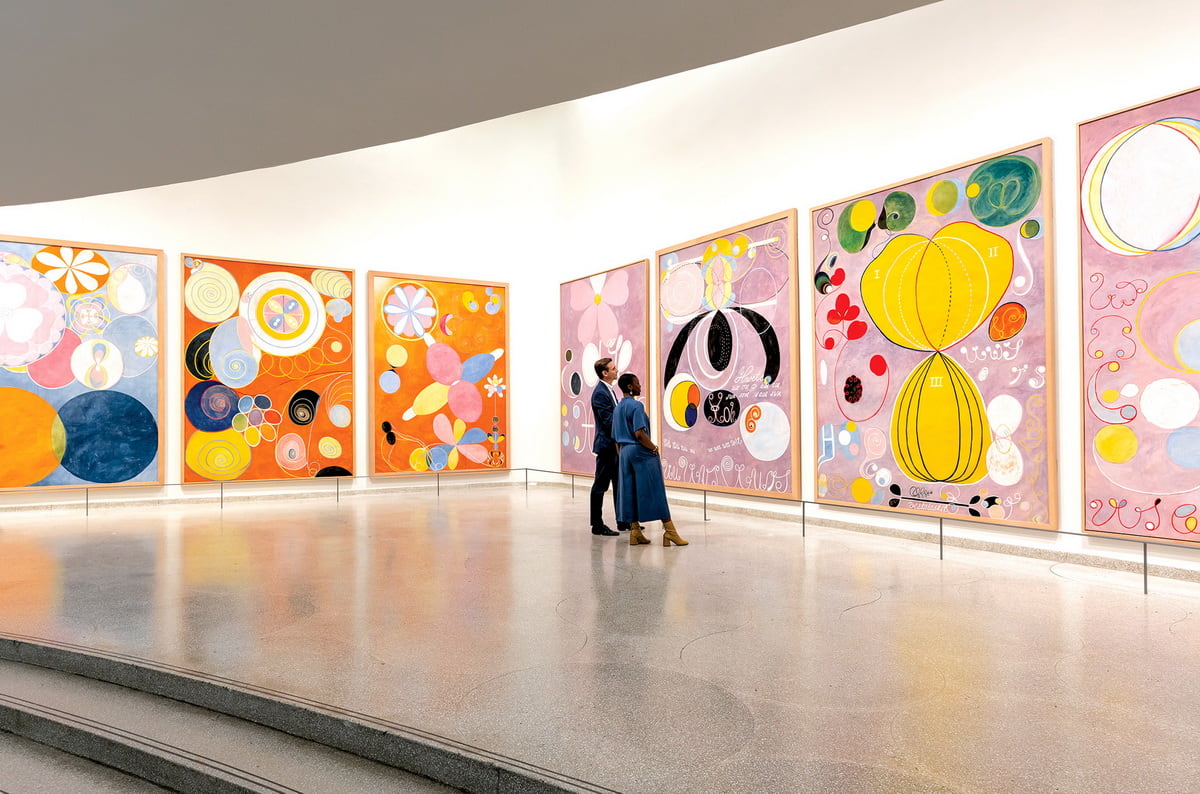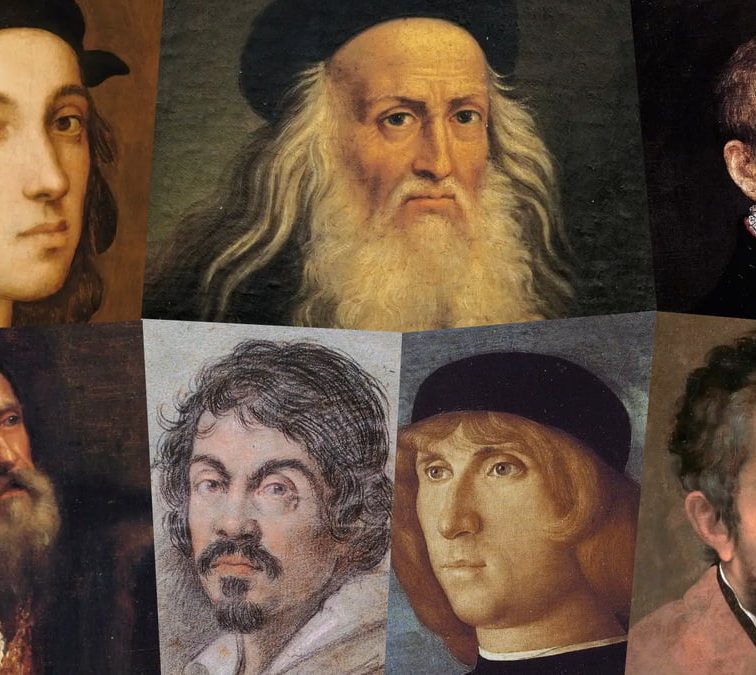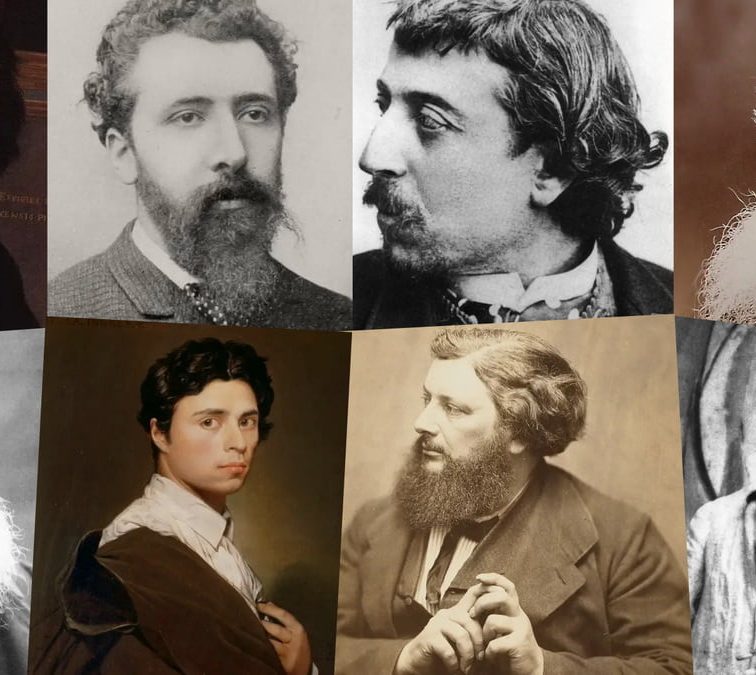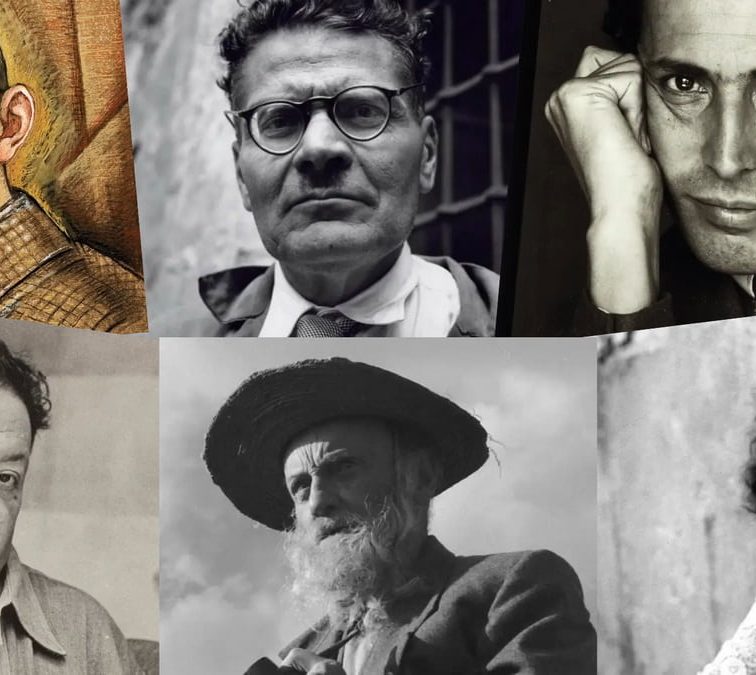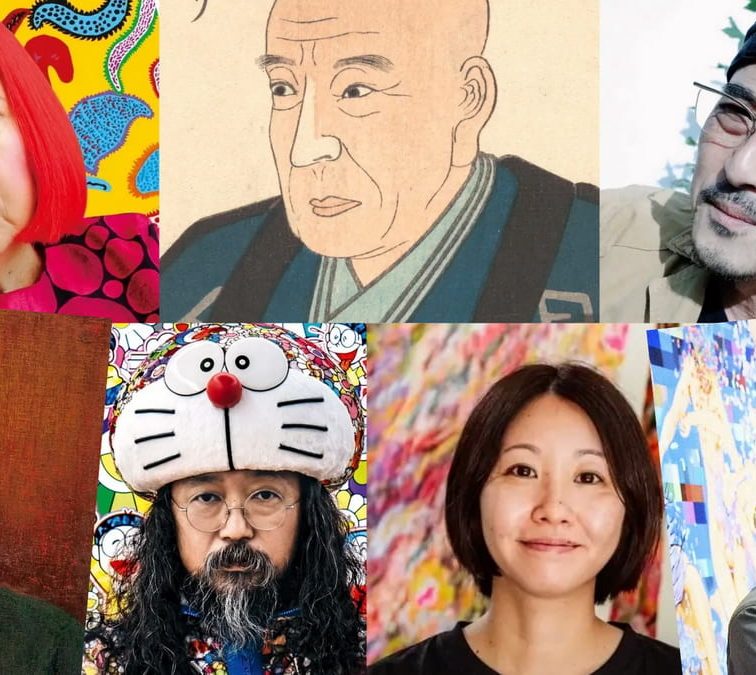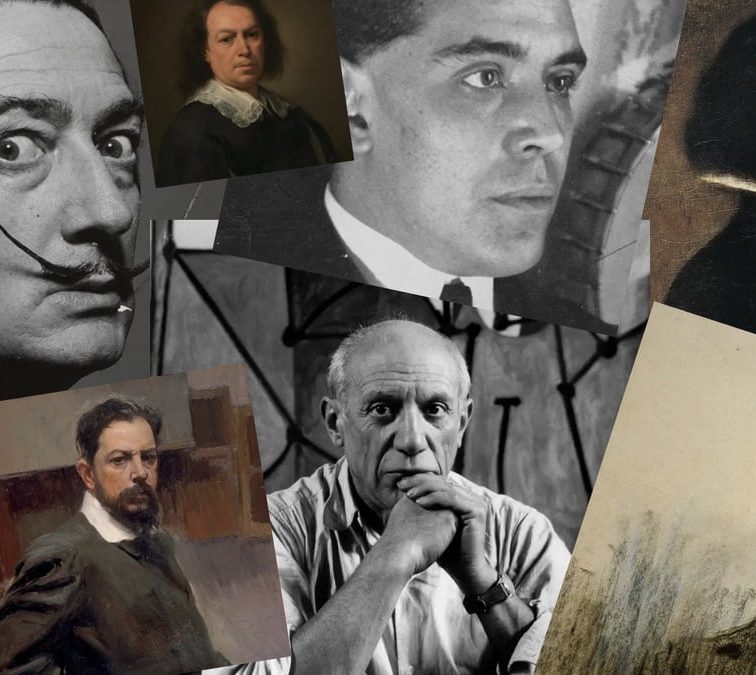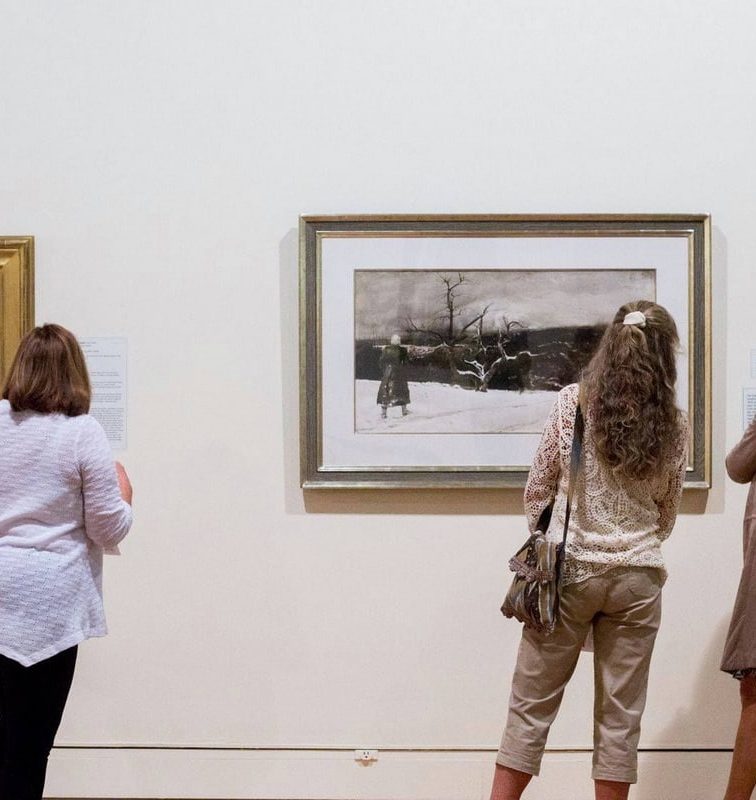Abstract art, a realm where colors, shapes, and forms break free from reality, offers a glimpse into the uncharted territories of human creativity. It’s a world where Pablo Picasso defied conventions with Cubism, a style that fragmented the familiar, and Wassily Kandinsky explored the emotional power of colors and shapes.
Imagine the daring of Jackson Pollock, whose drip paintings redefined the canvas, and the emotional depth of Mark Rothko’s color fields that speak directly to the soul. Each artist on our list has uniquely shaped the abstract world, leaving an indelible mark on the art landscape. As we delve into the lives and works of these visionaries, we uncover the stories behind the most famous abstract artists whose revolutionary ideas continue to intrigue and inspire.
1. Pablo Picasso: Revolutionizing Art with Cubism
Pablo Picasso, a pivotal figure in modern art, co-created Cubism with Georges Braque, revolutionizing the art world in the early 20th century. Beginning with his 1907 painting “Les Demoiselles d’Avignon,” heavily influenced by African tribal art, Picasso broke away from traditional Western painting. This piece led to the development of Analytical Cubism, characterized by fragmented, multi-dimensional views and a limited color palette.
Cubism was officially named in 1908, with Picasso and Braque exploring object-focused paintings. By 1912, they ventured into Synthetic Cubism, reintroducing color and incorporating collage elements. Despite these radical changes, Picasso maintained elements of three-dimensionality, linking traditional art with the emergence of abstract art.
Picasso’s Cubism, lasting till around 1914, influenced various fields, including literature and music. Its legacy is evident in later art movements like Futurism and Abstract Expressionism.
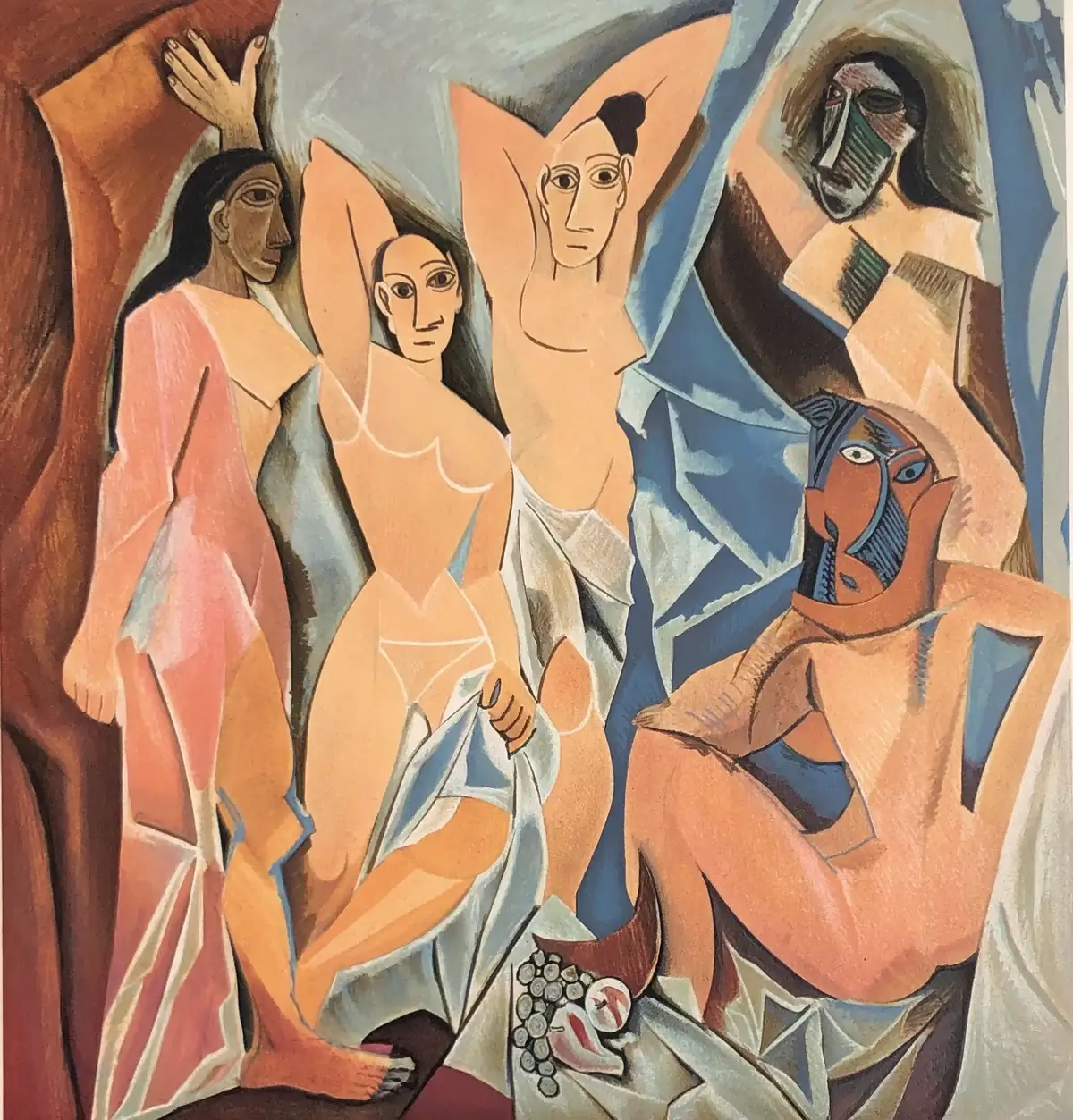
“Les Demoiselles d’Avignon” by Picasso, exemplifying Cubist style. Image: guyhepner.com
2. Wassily Kandinsky: The Pioneer of Abstract Art
Wassily Kandinsky, born in Moscow in 1866, dramatically shifted his career from law to painting at 30. His unique blend of European and Asian heritage influenced his artistic style, which was further shaped by Russian folk painting and his exposure to Moscow’s vibrant culture. Kandinsky co-founded the avant-garde group Der Blaue Reiter in 1911, significantly influencing the Expressionist movement.
His work evolved from fluid, organic forms to more geometric and pictographic styles, deeply imbued with spiritual themes and a focus on the synesthesia of color, sound, and spiritual expression. Notable works like “Composition VII” and “Several Circles” exemplify his abstract style. Kandinsky’s connection with music influenced his artistic approach, using colors and shapes to express emotions and spiritual messages.
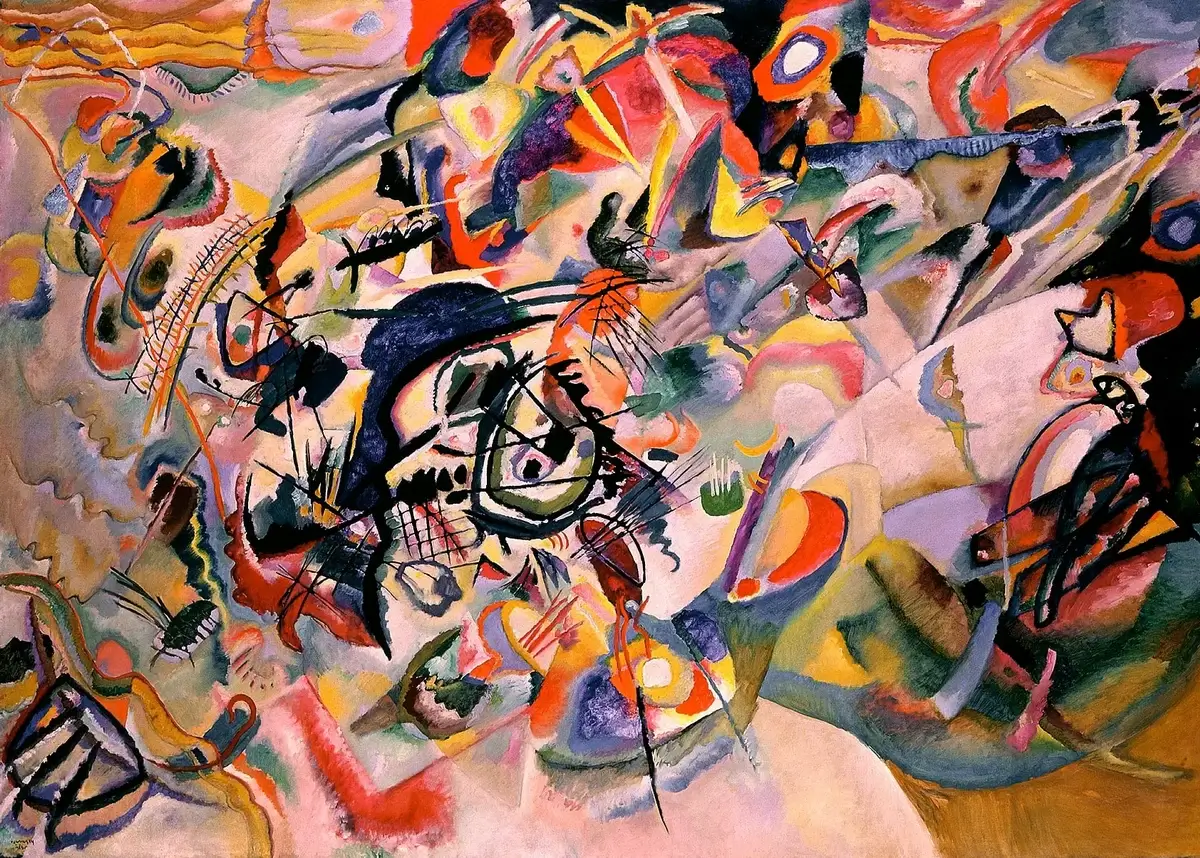
Kandinsky’s “Composition VII”. Image: wassilykandinsky.net
3. Jackson Pollock: Master of Drip Painting
Jackson Pollock revolutionized the art world with his innovative drip painting technique. Born in 1912, he became a key figure in the abstract expressionist movement. His unique style involved splashing liquid paint onto horizontal canvases, allowing him to engage physically and dynamically with his art.
Pollock’s most famous works, like “Number 17A” and “Autumn Rhythm,” are notable for their complex layering and fractal-like properties. He used numbers to title his paintings, focusing on abstract expression rather than representational imagery.
Tragically, Pollock’s life was troubled by alcoholism, which contributed to his premature death in a car accident in 1956 at age 44. His legacy, managed by his wife Lee Krasner, remains a significant part of modern art history, celebrated in posthumous retrospectives.
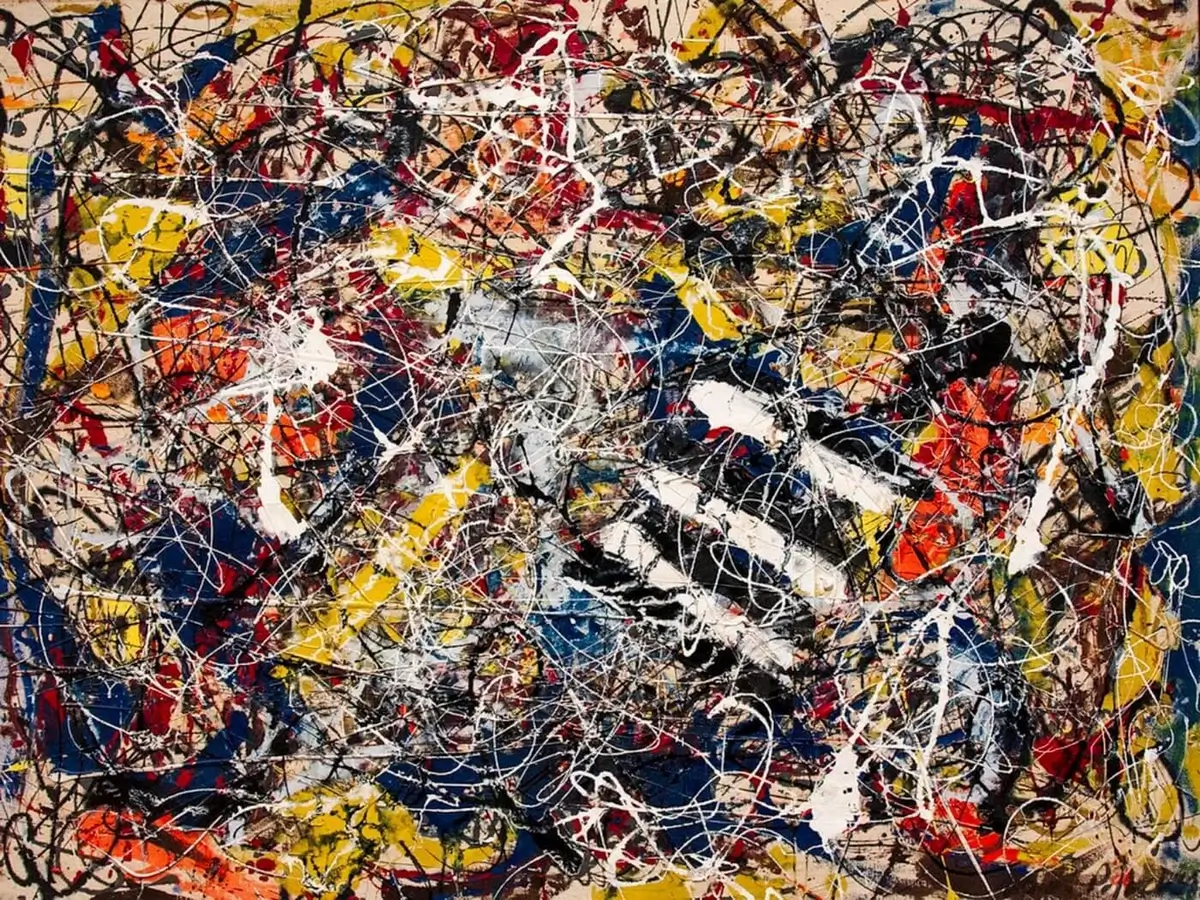
Pollock’s “Number 17A”. Image: tallengestore.com
4. Mark Rothko: The Emotional Depth of Color Field Painting
Mark Rothko, renowned for his profound influence in the Color Field movement, is celebrated for his emotive use of color. Initially influenced by surrealism, Rothko evolved towards abstraction, creating his signature “multiforms” – the forerunners to his Color Field masterpieces.
His paintings like “Four Darks in Red” and “No. 9” symbolize this transition, where vibrant colors gradually give way to more somber tones, reflecting Rothko’s emotional and philosophical depth.
Rothko believed these color blocks were more than abstract forms; they were expressions of human emotion, aiming to connect deeply with the viewer. Despite his tragic demise in 1970, Rothko’s legacy in the art world remains unshaken, his works a testament to the emotional power and spiritual depth of his artistic vision.
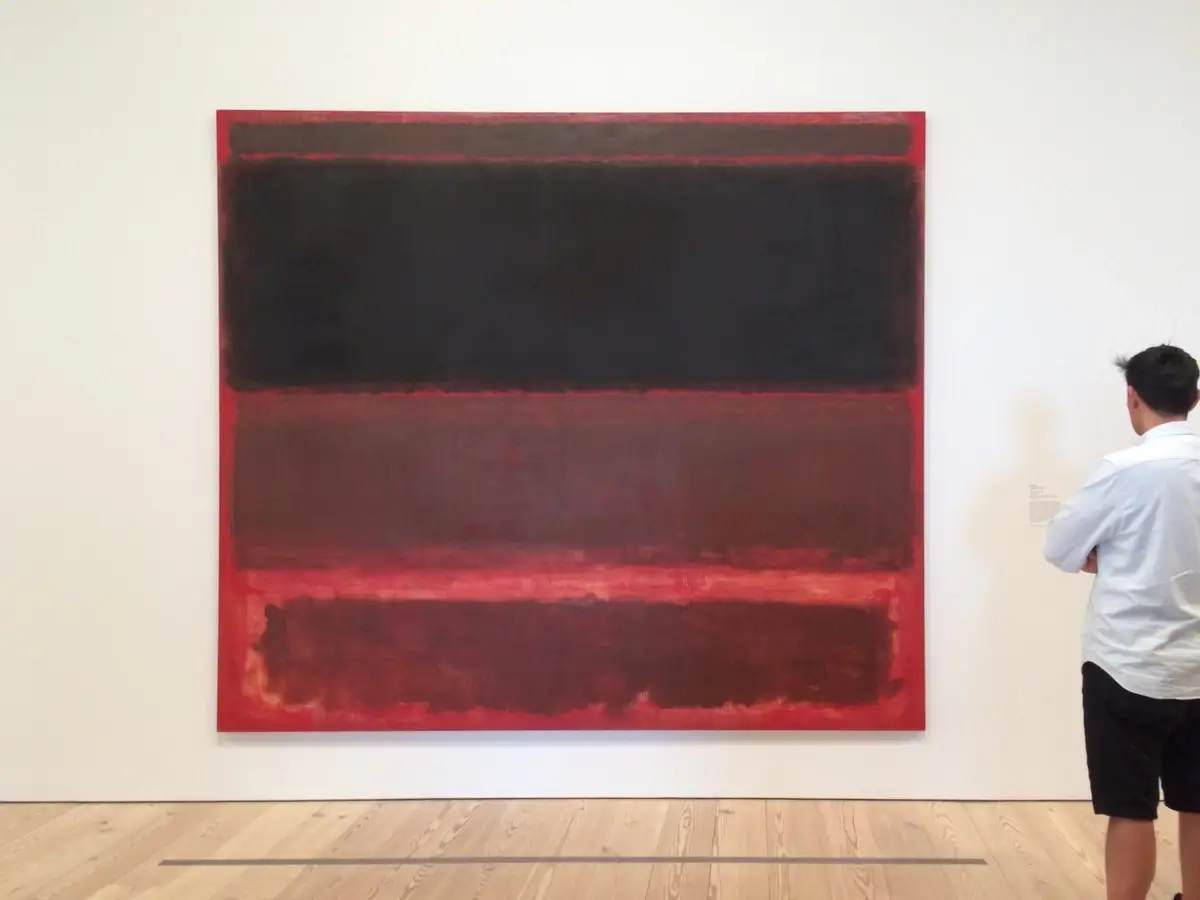
Rothko’s “Four Darks in Red”. Image: dailyrothko.tumblr.com
5. Joan Miró: Surrealist Innovations in Abstract Art
Joan Miró, born in Barcelona in 1893, significantly impacted abstract art and Surrealism. Initially influenced by Post-Impressionism and Fauvism, his early works featured vibrant landscapes and portraits.
Miró’s artistic evolution saw him delve into line, form, and structure, drawing inspiration from folk art. His Paris sojourn in the 1920s introduced him to Surrealism, influencing works like “The Farm” (1921). Joining the Surrealists in 1924, Miró developed ‘peinture-poésie,’ exemplified in “This is the Color of My Dreams” (1925).
Beyond traditional painting, he ventured into collage and ceramics, with political themes emerging in pieces like “The Reaper” (1937). His continual experimentation influenced contemporaries, marking a lasting legacy in the art world.
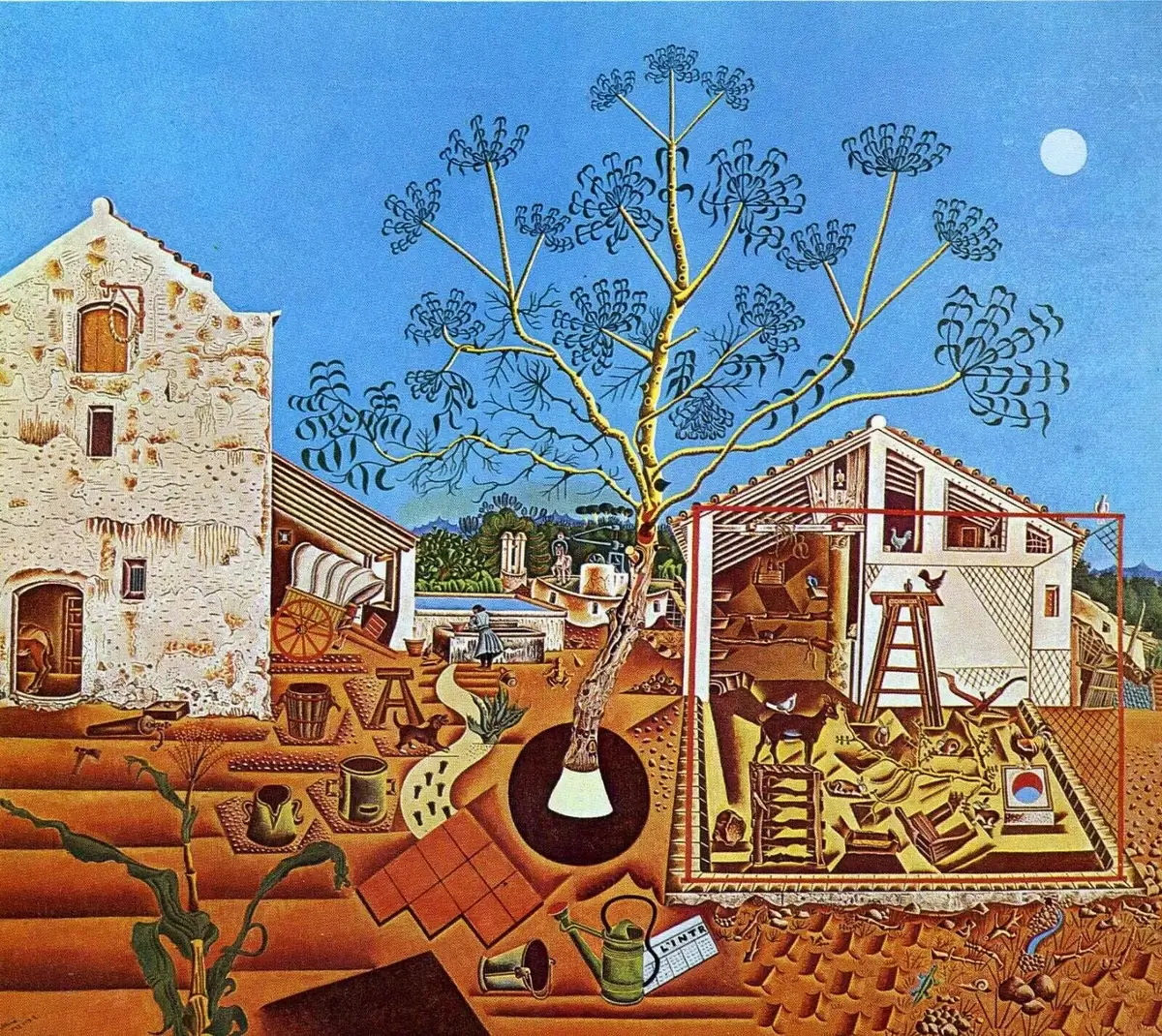
Miró’s “The Farm”. Image: paleoterran.com
6. Kazimir Malevich: The Creator of Suprematism
Kazimir Malevich, a revolutionary artist, pioneered the Suprematism movement, a significant shift in abstract art. Influenced by Impressionism, Symbolism, Fauvism, and Cubism, Malevich’s work transitioned to geometric abstraction, culminating in his famous “Black Square” in 1915. This piece, a stark black square on white, marked a radical departure from traditional art, emphasizing emotion over form.
In his manifesto “The Non-Objective World” (1926), Malevich emphasized the importance of pure feeling in art, challenging the traditional role of art in representing the visible world. His philosophy influenced not just his contemporaries but also future generations, shaping the trajectory of abstract art.
Despite the turbulent political backdrop of his era, including the October Revolution and Stalin’s regime, Malevich’s impact on the art world remains profound. His life’s journey from Kyiv to his significant role as an artist and theorist reflects the vibrant and dynamic period he lived through.
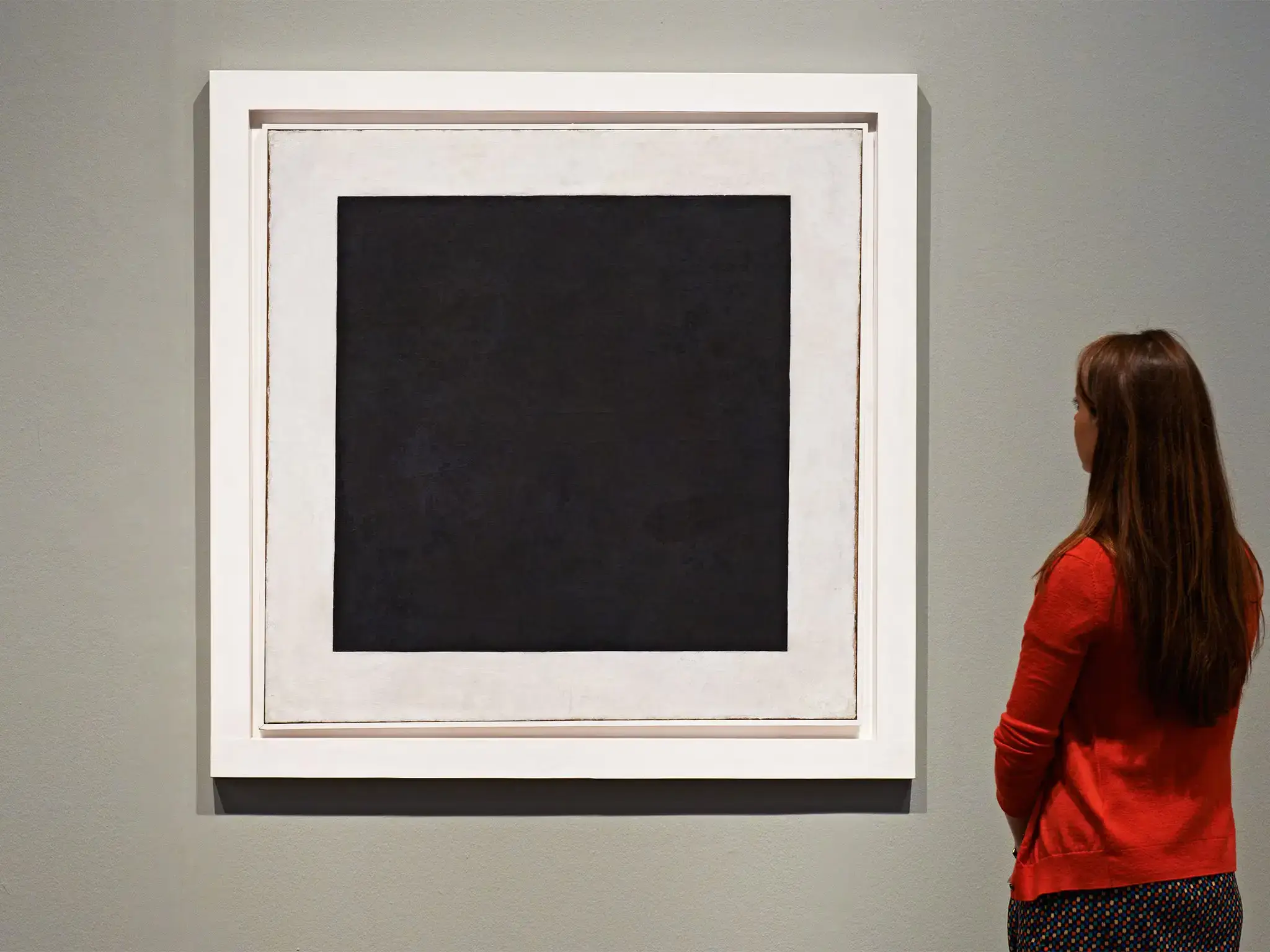
Kazimir Malevich’s “Black Square” (1915). Image: independent.co.uk
7. Willem de Kooning: The Dynamic Force of Abstract Expressionism
Willem de Kooning, a central figure in Abstract Expressionism, particularly known for Action Painting, made significant contributions through his dynamic style. His works from the late 1940s and ’50s, especially “Excavation” (1950) and the “Woman” series, including “Woman III,” are pivotal. These paintings are notable for their energetic brushstrokes and impasto, blending abstract forms with emotional expression.
In “Excavation,” de Kooning’s abstract style and understanding of physical space are evident. The canvas, filled with various shapes and lines, creates a captivating visual experience. Similarly, in the “Woman” series, de Kooning merges the figure with the background, making the female form both emerge from and dissolve into the surrounding space.
De Kooning’s approach, marked by spontaneity and bold color usage, positioned him as a key influencer in Abstract Expressionism.
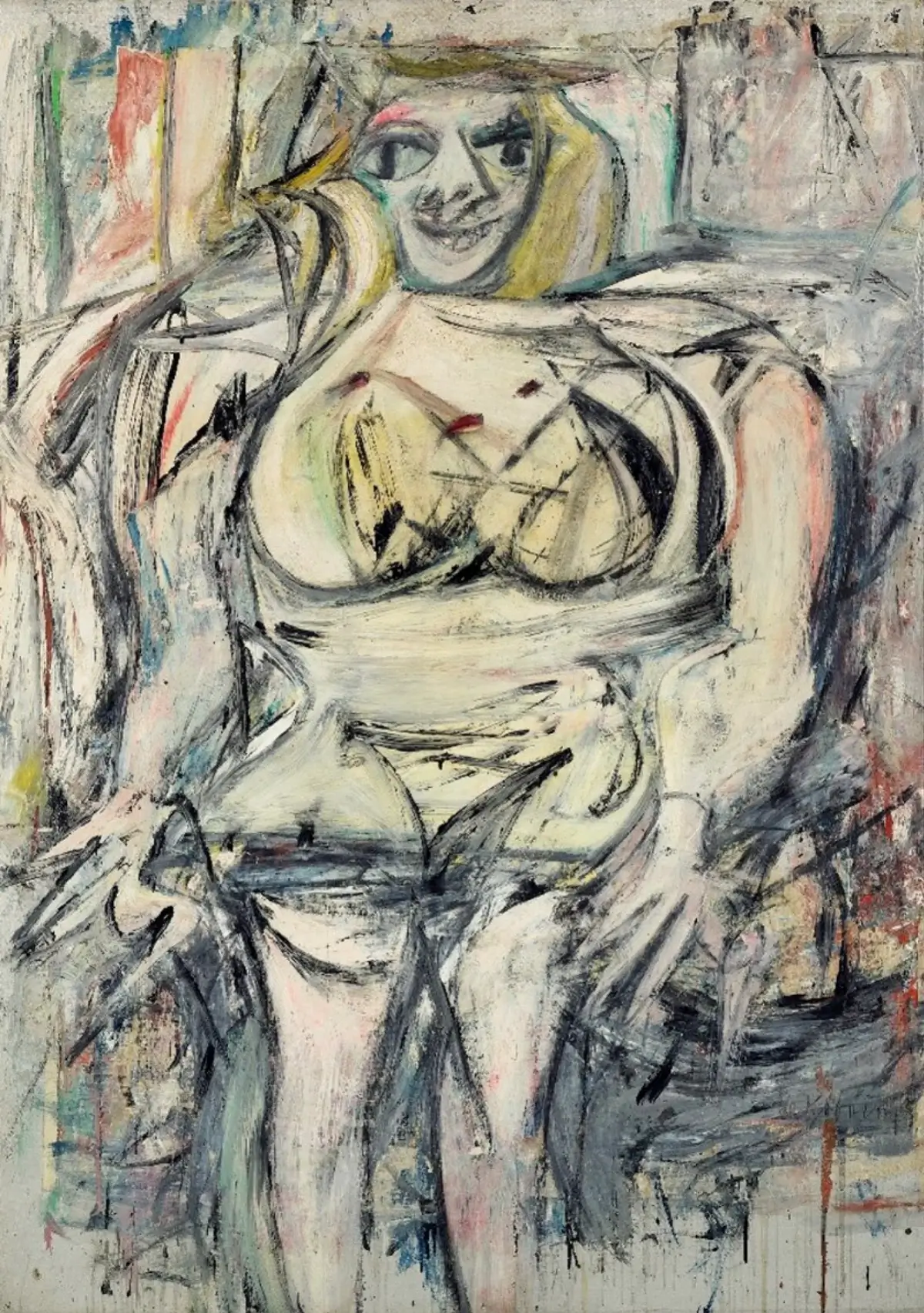
Willem de Kooning’s “Woman III” (1951-53). Image: arthive.com
8. Piet Mondrian: The Geometric Brilliance of Neoplasticism
Piet Mondrian, renowned for pioneering Neoplasticism, brought a revolutionary perspective to modern abstract art. His approach, focusing on fundamental elements like straight lines, right angles, and primary colors, emphasized formal purity. Works like “Composition with Red, Blue, and Yellow” display Mondrian’s unique ability to create harmonious, asymmetrical compositions using geometric forms.
Mondrian’s influence transcends painting, impacting design, architecture, and fashion. He personifies the Modernist ideal, with his art serving as a symbol of modernism’s values. His contributions have shaped various art movements, including Color Field painting and Minimalism.

Mondrian’s “Composition with Red, Blue, and Yellow” (c. 1930). Image: posterlounge.ie
9. Franz Kline: The Boldness of Black and White Abstraction
Franz Kline, an American painter, is celebrated for his contribution to the Abstract Expressionist movement, especially through his bold black and white paintings. His artistic approach, known for capturing the immediacy of artistic creation, was a hallmark of “Action painting,” a subset of Abstract Expressionism. Kline’s works are characterized by dynamic, gestural brushstrokes, infusing his paintings with raw and spontaneous energy. This style reflected the tumultuous emotions of his era and mirrored broader social concerns, subtly commenting on civil rights and equality.
Kline’s reputation was firmly established in 1950 with his first one-man show at the Egan Gallery, showcasing his signature style of black on white compositions. Although initially inspired by French painter Pierre Soulages, Kline’s work evolved to include complex chiaroscuro and later reintroduced color. His experiments with color in the late 1950s, though still developing at the time of his death in 1962, hinted at a new artistic direction.
Kline’s work has been viewed as a progression toward minimalist painting, holding a unique position in the New York School’s style. His influence extended to various artists such as Robert Rauschenberg and Mark di Suvero, highlighting his lasting impact on the art world.
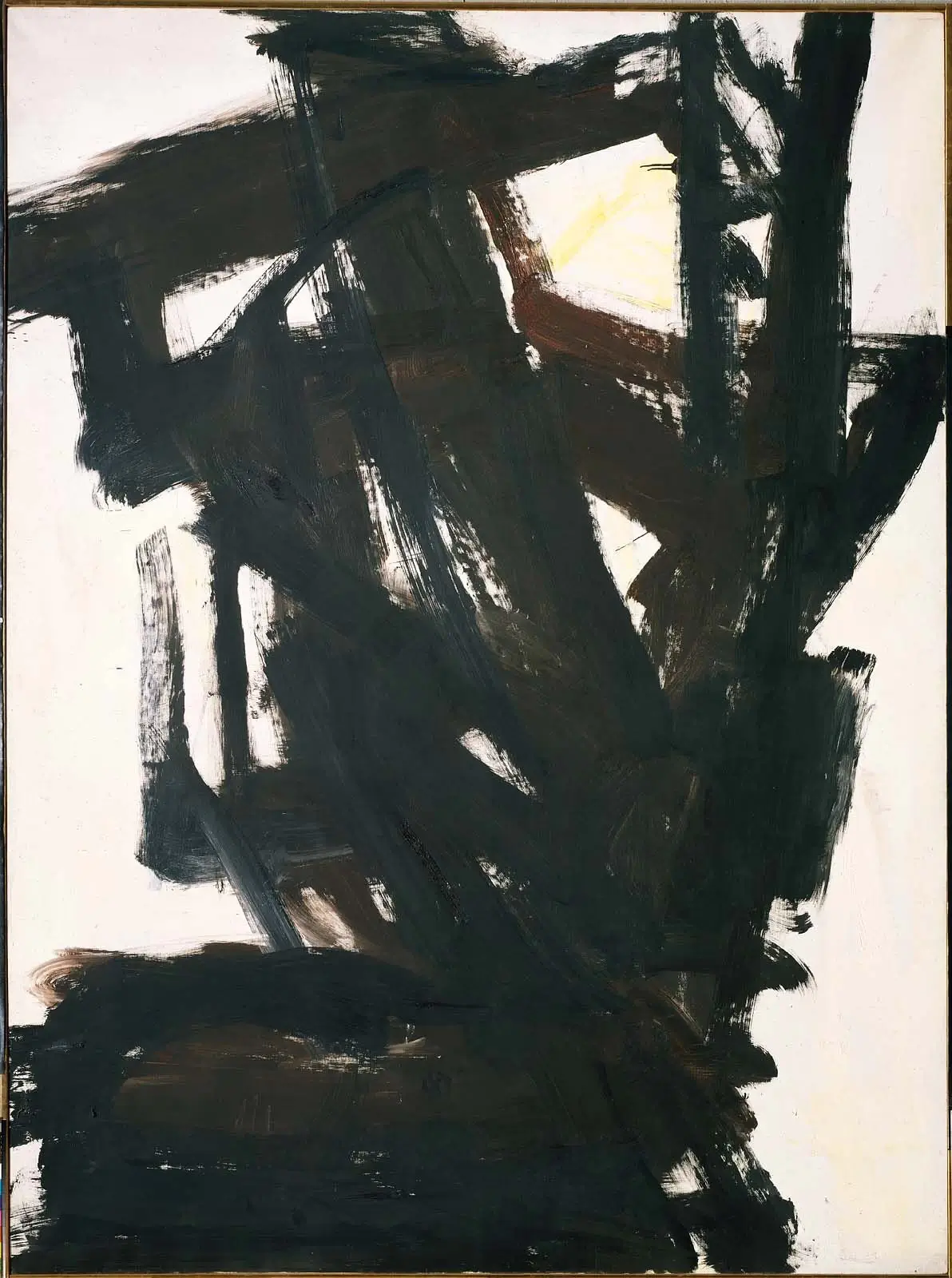
Franz Kline’s “Probst I” (1960). Image: Pinterest
10. Cy Twombly: Scribbles that Transformed Modern Art
Cy Twombly, an influential American artist, marked a unique position in modern art with his distinctive fusion of gestural brushwork and calligraphic scribbles. Born in 1928 in Lexington, Virginia, Twombly’s artistic journey was shaped by his studies at the School of the Museum of Fine Arts in Boston and the Art Students League in New York. His work, often on large-scale canvases, is noted for its raw, graffiti-like marks, blending abstract expressionism with emotional depth and narrative elements.
Twombly’s “Blackboard Paintings,” from the late 1960s, stand out in his oeuvre for their dark backgrounds and energetic scribbles. These works, along with others like “Leda and the Swan” and “Fifty Days at Iliam,” showcase his unique approach to abstract expressionism, intertwining emotion, symbolism, and gestural abstraction.
His art bridged abstract expressionism and contemporary art, profoundly influencing subsequent generations of artists. Cy Twombly’s legacy in abstract and contemporary art is a testament to his ability to convey complex emotions and narratives, leaving a lasting impact on the art world.
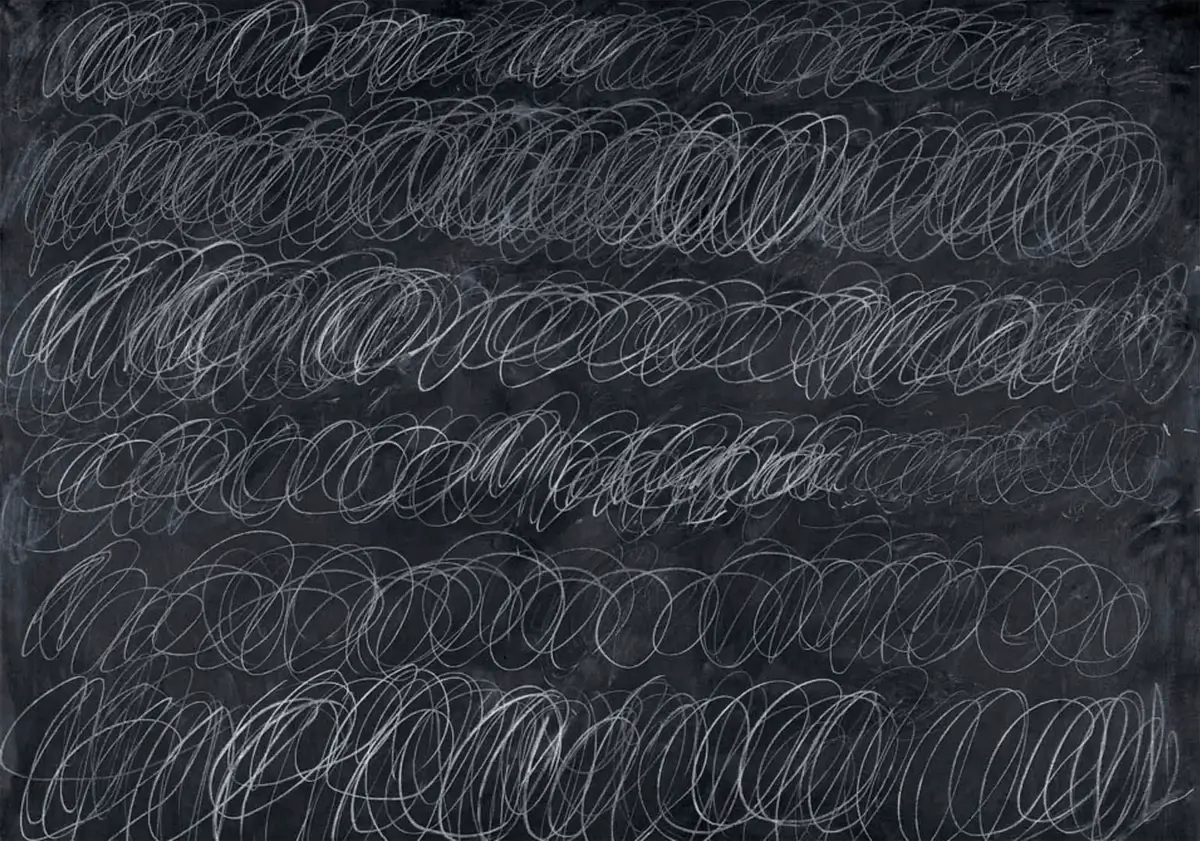
Cy Twombly ‘Cold Stream’ (1966). Image: artblart.com
FAQ
Who’s the most famous abstract artist?
Pablo Picasso is often considered the most famous abstract artist. While primarily associated with Cubism, his influence extends into abstract art. Picasso’s innovative approaches to form, perspective, and subject matter significantly impacted the development of abstract art in the 20th century.
Who was similar to Kandinsky?
Paul Klee is frequently mentioned alongside Wassily Kandinsky for their similarities in abstract art. Both artists were part of the Bauhaus movement and shared an interest in exploring color theory and abstract forms. Klee’s work, like Kandinsky’s, is known for its abstract imagery and symbolic language.
Who is the godfather of abstract art?
Wassily Kandinsky is often referred to as the godfather of abstract art. He is credited with creating one of the first purely abstract works, and his theoretical writings on abstraction were highly influential in the art world. His exploration of color and form opened new possibilities for artistic expression.
Who is the mother of abstract painting?
Hilma af Klint, a Swedish artist, is considered by many as the mother of abstract painting. Her work predates the first purely abstract compositions by Kandinsky. She explored abstract forms and spiritual motifs in her paintings, which were not widely recognized until decades after her death.
Why is abstract art so popular?
Abstract art is popular due to its ability to evoke emotions and ideas without relying on realistic depictions. Its emphasis on color, shape, and texture allows for personal interpretation and emotional connection, making it accessible and engaging to a wide audience. Additionally, its versatility and adaptability to different artistic styles and movements contribute to its enduring popularity.
What is the most sold abstract painting?
The most sold abstract painting is “No. 17A” by Jackson Pollock, sold for $200 million in 2016. This piece exemplifies Pollock’s iconic drip-painting style and is a prime example of Abstract Expressionism, making it one of the most expensive paintings ever sold.
Who is the world’s youngest signature style abstract artist?
Identifying the world’s youngest signature style abstract artist is challenging, as new young artists continually emerge and make their mark in the art world. However, prodigious talents like Aelita Andre, who began painting at a very young age and had her first exhibition at the age of two, can be considered among such young artists making a significant impact in abstract art.
When was abstract art most popular?
Abstract art gained significant popularity in the post-World War II era, particularly during the 1950s and 1960s. This period saw the rise of Abstract Expressionism, especially in the United States, where artists like Jackson Pollock and Mark Rothko became prominent figures in the art scene.
Who is the highest paid living abstract artist?
As of 2020, Damien Hirst was reported to be the richest living artist, with an estimated worth of $1 billion. Hirst is known for his contemporary art that often explores themes of death, with notable works featuring preserved animals and “spin paintings.” Other artists with significant net worths include Jeff Koons, valued at $500 million, and Jasper Johns, estimated at $300 million. These figures indicate the substantial financial success that can be achieved in the contemporary art world.


